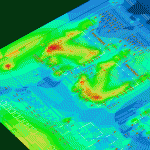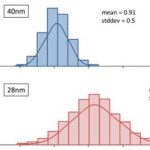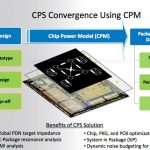ANSYS and Apache are putting on a new series of seminars about designing future electronic systems. These are only getting more complex, of course, cramming more and more functionality into smaller portable devices with good battery life (and not getting too hot), integrating multiple antennas into a single platform, and TSV-based… Read More
Electronic Design Automation
Cooley on Synopsys-EVE
John Cooley has an interesting “scoop” on the Synopsys-EVE acquisition. The acquisition itself is not a surprise, it is the one big hole in Synopsys’s product line and EVE is the perfect plug to fill it. It was also about the only thing Cadence has (apart from PCB) that Synopsys does not.
The interesting thing … Read More
Converge in Detroit
When I worked for VaST we went to a show that I’d never heard of in EDA: SAE Convergence (SAE is the Society of Automotive Engineers). It is held once every two years and it focuses on transportation electronics, primarily automotive although there did seem to be some aerospace stuff there too. This is an even year, Convergence… Read More
Variation at 28-nm with Solido and GLOBALFOUNDRIES
At DAC 2012 GLOBALFOUNDRIES and Solido presented a user track poster titled “Understanding and Designing for Variation in GLOBALFOUNDRIES 28-nm Technology” (as was previously announced here). This post describes the work that we presented.
We set out to better understand the effects of variation on design at 28-nm. In particular,… Read More
A Brief History of RTL Design
RTL is an acronym for Register Transfer Level and refers to a level of hardware design abstraction using Registers and logic gates. Here’s an example schematic showing one DFF as a register, and one inverter as a logic gate.
Figure 1: RTL diagram of a DFF (D Flip Flop) and Inverter… Read More
A Brief History of Atrenta and RTL Design
We’re plagued by acronyms in this business. Wikipedia defines RTL as follows: “In digital circuit design, register-transfer level (RTL) is a design abstraction which models a synchronous digital circuit in terms of the flow of digital signals (data) between hardware registers, and the logical operations performed on those… Read More
Mentor Graphics Update at TSMC 2012 OIP
What
In just 20 days you can get an update on four Mentor Graphics tools as used in the TSMC Open Innovation Platform (OIP). Many EDA and IP companies will be presenting along with Mentor, so it should be informative for fabless design companies in Silicon Valley doing business with TSMC.
… Read More
Aldec-Altera DO-254
As described in DO-254, any inability to verify specific requirements by test on the device itself must be justified, and alternative means must be provided. Certification authorities favor verification by test for formal verification credits because of the simple fact that hardware flies not simulation models. Requirements… Read More
Jasper User Group
The Jasper User Group meeting has been announced. It will take place on November 12th and 13th. As last year, it will be at the Cypress Hotel at 10050 De Anza Boulevard in Cupertino. The user group meeting is free for qualified Jasper customers.
Topics to be covered are, of course, all things verification:
- SoC subsystems verification
Chip Aware System Design
On Wednesday this week Ansys/Ansoft/Apache are presenting a new webinar Chip Aware System Design. It is presented by Dr Steven Gary Pytel Jr of the Ansoft part of Ansys, and Matt Elmore of the Apache subsidiary. The topics that will be covered include:
- Power Delivery Network (PDN) design requirements
- ABCD Matrix theory
- SYZ Matrix











Quantum Computing Technologies and Challenges